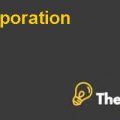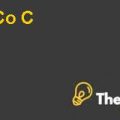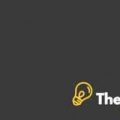Introduction
The founding members of the company were Duke Glenn, Roger Green, and John Waddell who were all MBA graduates from Harvard Business School and gained interest in the company in the year 1968. By the end of the year 1968 the company was ranked 11th in the list of electronics distributor and significantly improved its position and reached the top of the list in the year 1992. By the year 2002 the company had almost 12,450 employees and had expanded in around 40 countries in 4 continents with accumulated sales of around $7.4 billion globally.
The company Arrow Electronics had started by their humble operations of selling radio equipment in the year 1935 and with the passage of time expanded the business by offering products for home entertainment and other electronic parts. Their sales included, servers, work stations, storage products, microcomputers, terminals, printers, controllers, electromechanical and connector products and many more. Apart from providing goods they also, provided value-added services to their customers who helped them design and order parts at the right time and place. To enhance and achieve their value proposition they developed a force team of FSRs and SMRs. FSRs or field sales representatives who interacted with the customers promoted the new products offered by Arrow’s suppliers. Their prime responsibilities included solving the conflicts between the company and the customers, building customer relationships and negotiate major contracts.
On the other hand, SMRs were branch based sales personnel who had the responsibility of interacting with the purchasing agents of the customers, checking upon delivery updates, tracking customers’ shipment and many more. Apart from the SMRs and FSRs, there were also the positions of Product Managers and Field Application Engineers (FAEs). The product managers worked in conjunction with the, FSR to keep them up-to-date with the latest products and the FAEs had the job description who offered technical support and any advice regarding their needs.
Problem Diagnosis
Scheihing who is the Senior Vice President of worldwide operations at Arrow is hesitant about whether to allow a newly acquired company to continue with its old methods. The new company is Eagle’s semiconductor division and they operate using a traditional strategy of managing their warehouses. Scheihing places great emphasis on the accuracy of inventory data and believes they are the prime reason behind Arrow’s success from becoming a $10 million to $10billion. Thus the dilemma arises about whether to allow the Eagle’s division to continue with its traditional methods or not and further complications arises as within the agreements made by the CEO of Arrow had negotiated that Eagle would retain autonomy of managing their warehouses. Eagle was performing on only 70% at its best level and 60% are the other warehouses. Their customer complaints, and return levels were also exceeding the prescribed rate at Arrow’s and they were also repurchasing items that were already existing in their inventory, this was affecting Eagle’s reputation. However, Scheihing was worried about the low inventory accuracy levels from Eagle’s warehouses which were eroding Arrow’s impeccable reputation of maintaining accurate levels of inventory. Scheihing would like the Eagle warehouses to be incorporated within the large primary distribution centers PDCs of Arrow so as to increase efficiency. However, she doesn’t want to impose the Arrow ways onto Eagle or go back on the autonomy promised by the CEO of Arrow.
Alternatives
This dilemma would be solved when the inventory accuracy of Eagle comes at par with that of Arrow. However, a confrontation with the company would deteriorate the relations between them thus this option would be deemed undesirable. Therefore the need to find other alternatives would be imperative in the current scenario to redeem the company’s reputation and not to sever relations with the merged company. The most direct option of confrontation has already been deemed undesirable as it would be seen as an unprofessional act and not profitable for marinating relationships within the company..................
This is just a sample partial case solution. Please place the order on the website to order your own originally done case solution.
Arrow Electronics is the fastest growing distributors of electronic components in North America and the second largest. Its capital structure policy of heavy dependence on debt financing in sharp contrast to its main rival, Arnet. Students are asked to think about why, and the needle can go about reducing their business and financial risks.
This case is only available in paper format (HBP do not have the rights to distribute digital content). As a result, a digital copy of an educator if not available through this Web site. "Hide
by Robert R. Glauber, Nabil N. El-Hage Source: Harvard Business School 17 pages. Publication Date: February 14, 1985. Prod. #: 285114-HCB-ENG












